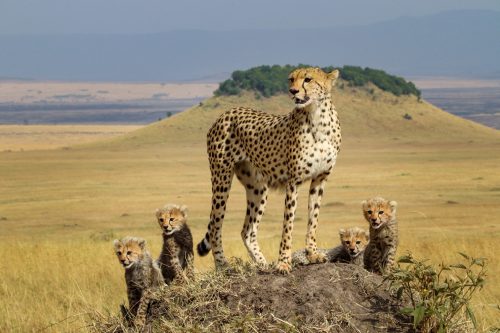
The big cat drama continues and this week Chongo, one of the Bila Shaka boys, was caught up in it. We came across three male lions which at first, we thought were just some males in a coalition. That changed soon after we realised that Chongo was actually running away from the other two males, most likely the Nyati Males given this was in an area known as Rain Gauge which is near the border where the Bila Shaka and the Nyati Six males' territories meet.
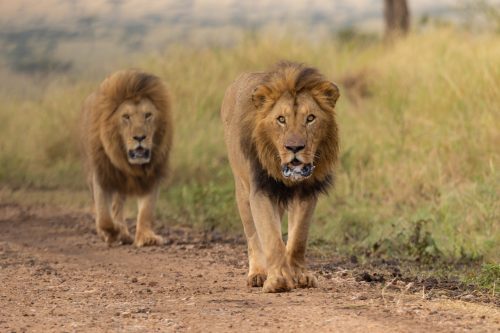
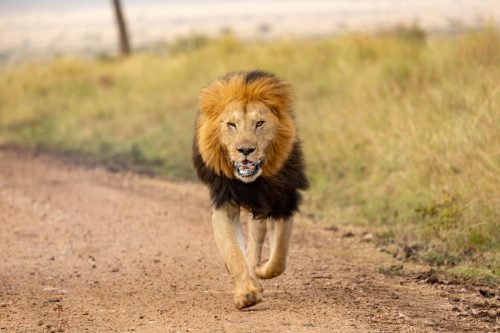
In this case, Chongo seemed to have been on a mystery solo mission behind enemy lines. Probably looking for a new mate. There’s been a sizeable shift in lion dynamics as of late as different prides seek to expand their territories as well as look to spread their genes.
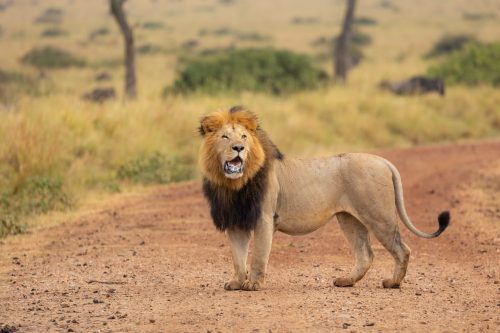
A day later and in the same vicinity, we bumped into Doa, another member of the Bila Shaka boys. We spent some time observing his behaviour and noticed a flehmen response on his face — a mammalian behaviour in which the animal inhales with its mouth open and upper lip curled to expose the Jacobson’s organ to detect a scent or pheromone.
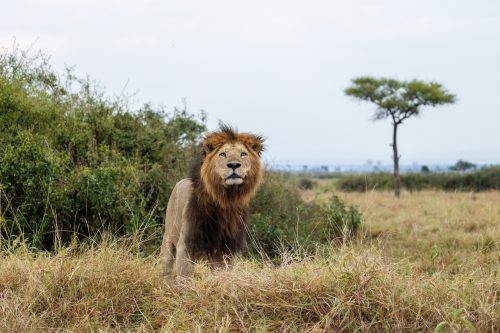
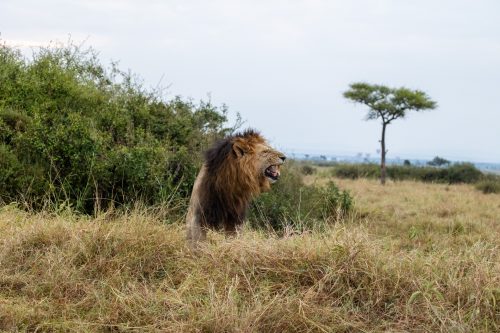
He sniffed around and flehmened several times then moved something that looked like a wildebeest carcass into a shrub nearby. We suspect the kill was not his and he was likely detecting an intruder scavagining in his territory.
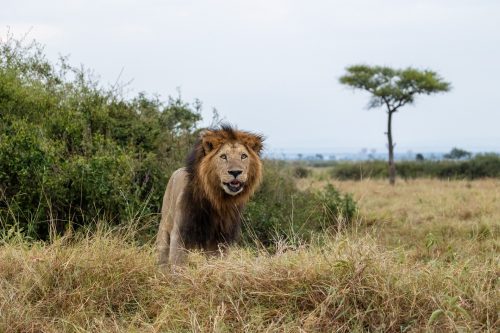
The rains have returned after several weeks of a dry and dusty Mara. This has made the dry grass softer for the wildebeest herds who are now grazing further north into the Mara Triangle towards Angama Mara.
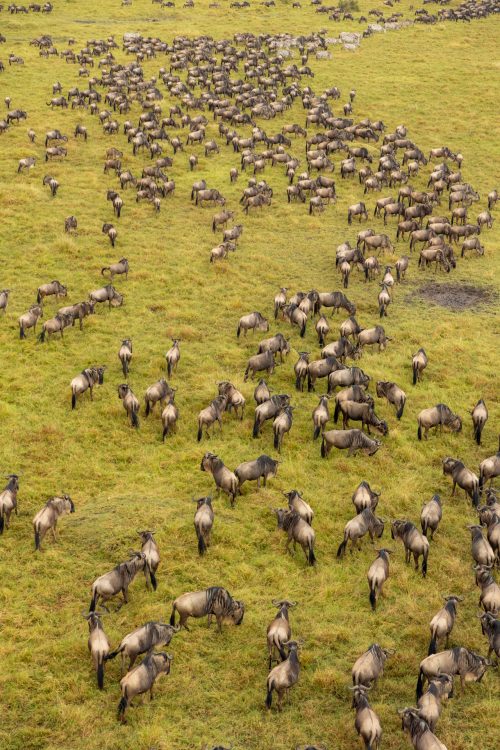
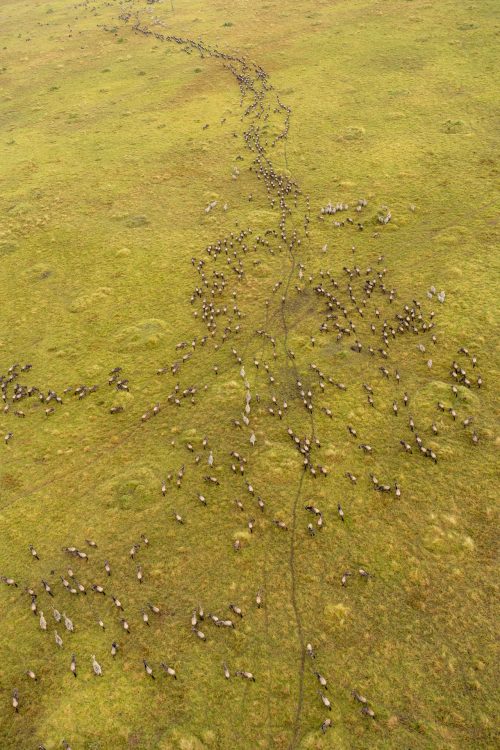
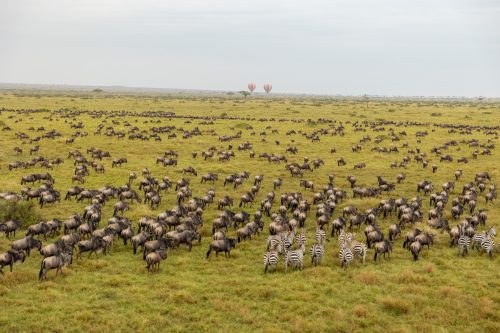
The rain also causes a chain reaction as increased precipitation boosts activity from moisture-loving bugs which again increases bird activity in the ecosystem. This explains the abundance of lovely bird sightings in the Triangle recently.
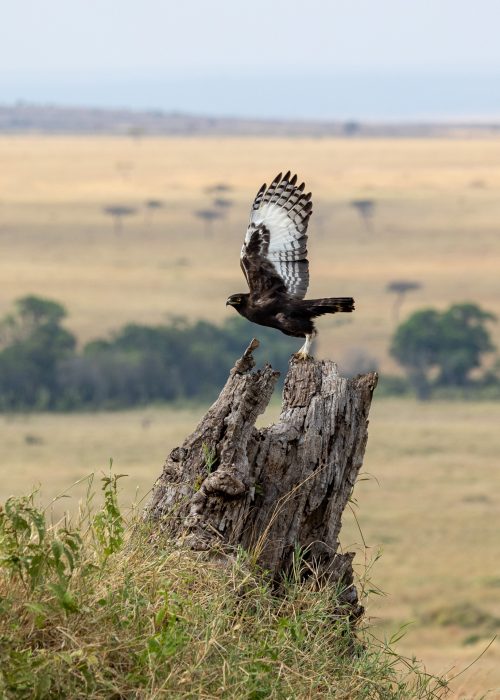
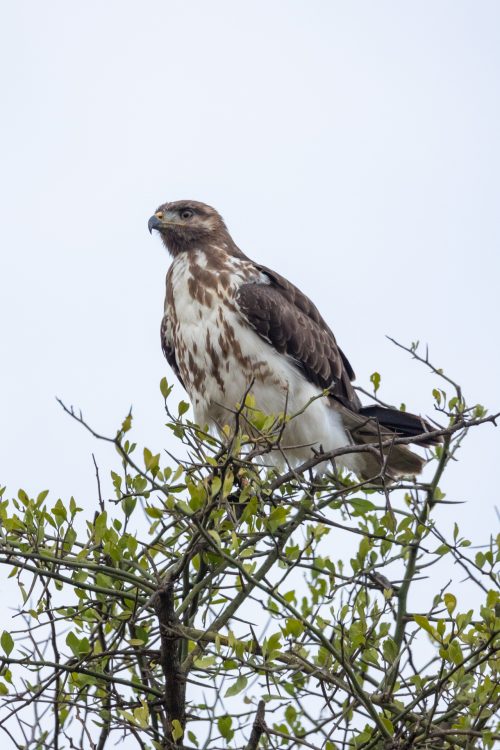
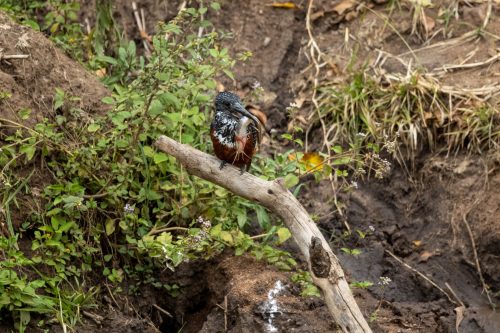
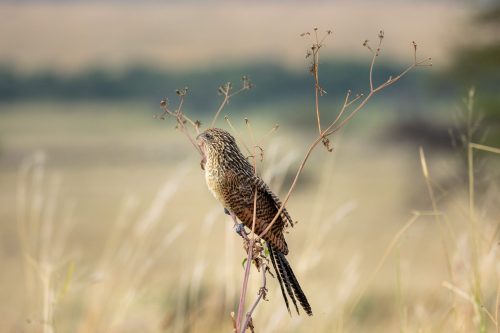
Our ever so striking Bush Princess a.k.a Nadalla, which means 'the playful one' in Maasai, named after her playful nature, has been switching up her menu like the princess she is. Wilson, one of Angama's guides, suspected she made a wildebeest kill which lay just a few meters from a tree — but she had a hoisted another, very interesting, kill already.
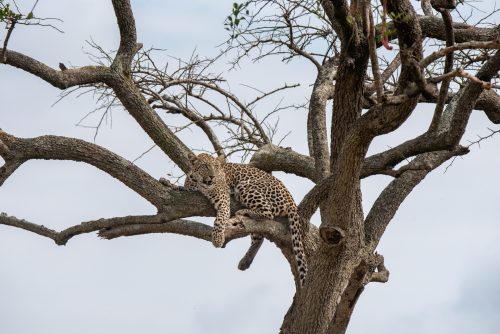
It seems after she killed the wildebeest, she spotted a serval cat — certainly easier to carry up a tree and avoid altercations with scavengers. Leopards are known to have a wider diet than most cats and will eat just about anything, unlike other predators whose preferences are more niche.
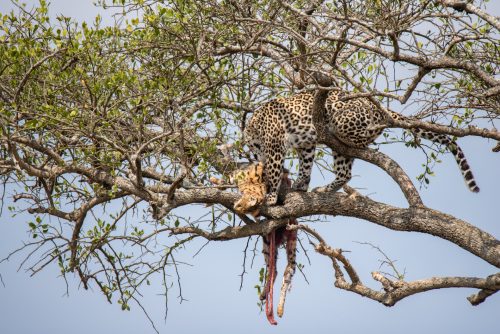
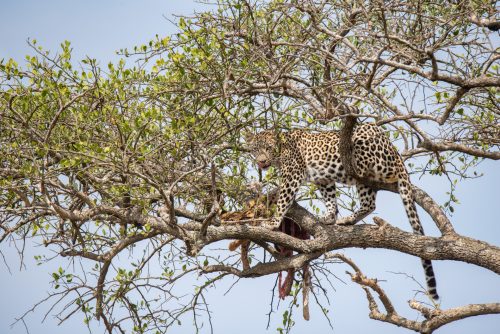
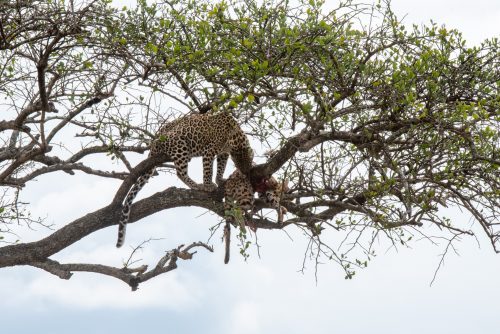
With the wildebeest herds now scattered in most parts of the triangle, there’s plenty of food readily available for predators and lions are definitely making the best out of it.
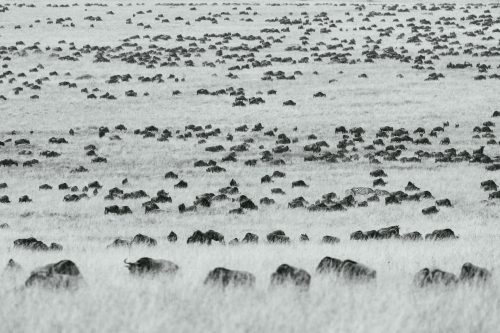
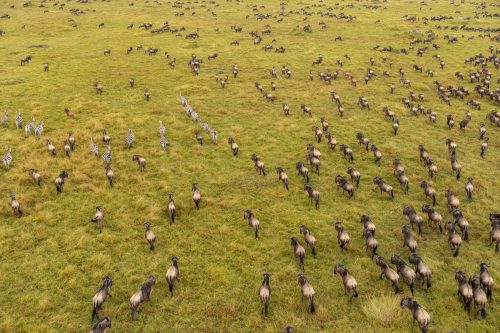
We caught up with some of the other prides in the Triangle and the Paradise Pride seemed to be having an all-you-can-eat buffet with two wildebeest kills, which makes sense when you are 10 strong.
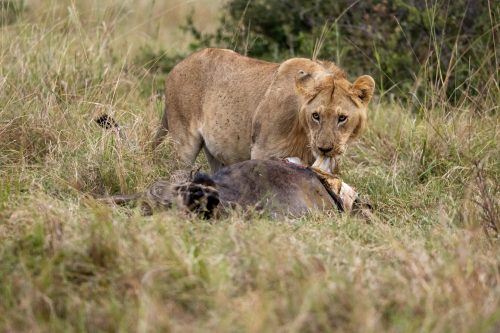
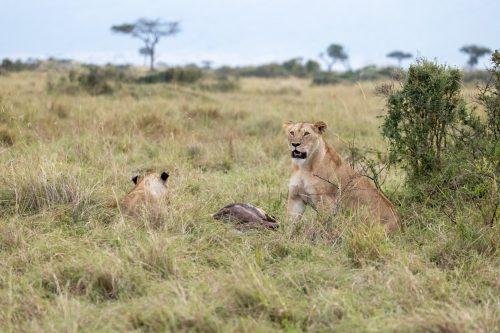
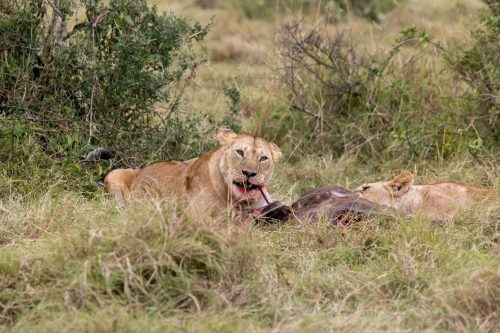
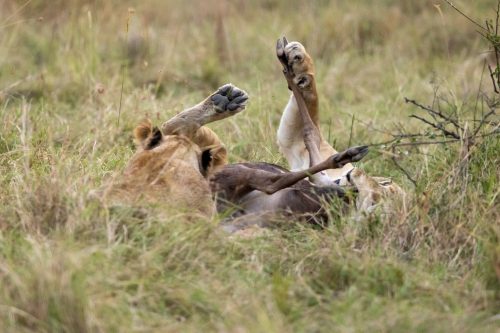
The Border Pride had also made a kill which we could not identify but could tell they were enjoying it greatly by the sound of teeth crushing bones.
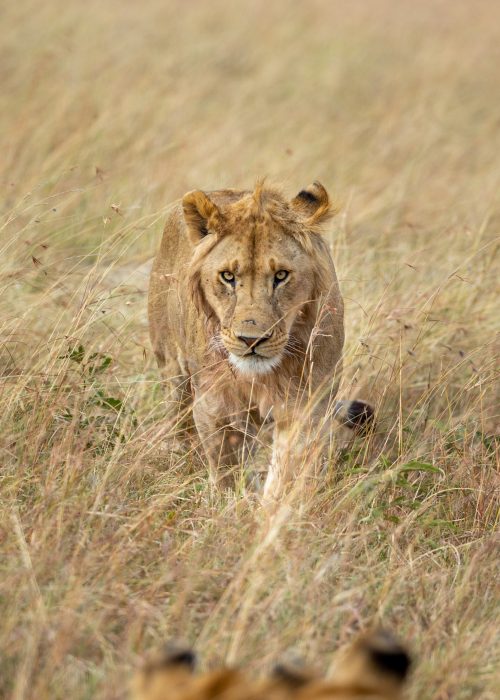
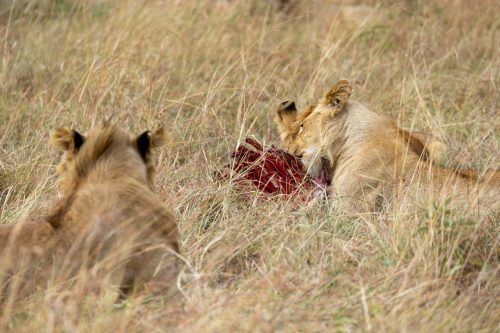
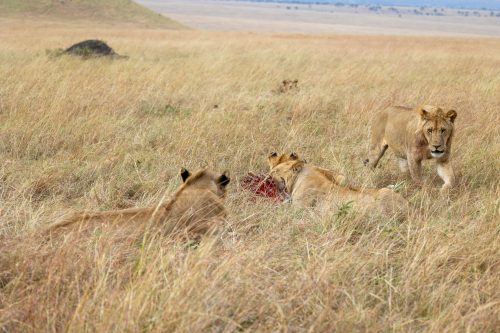
Risasi has been spotted several times this week and has been a delight for many after bringing out her four healthy cubs recently. She continues to be very careful with her cubs as their survival is highly stacked against them. She is in a very tricky spot being a young mom and in an area surrounded by potential enemies. We have seen her constantly on the lookout most likely for anything that might threaten her cubs. One of our guests took some stunning images of this beautiful cheetah and her cubs.
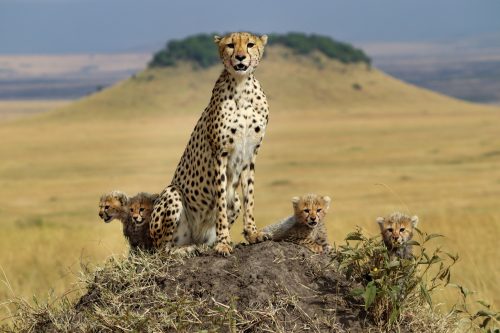
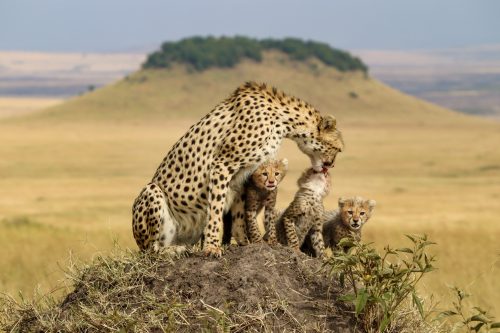
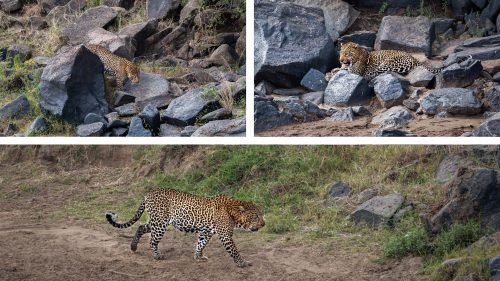
Last year, Shujaa settled down on the banks of the Mara River to pick off the stragglers who have been exhausted by crossing the river and facing the terrors that lurk in its waters.
Filed under: This Week at Angama
Subscribe for Weekly Stories
Comments (0):
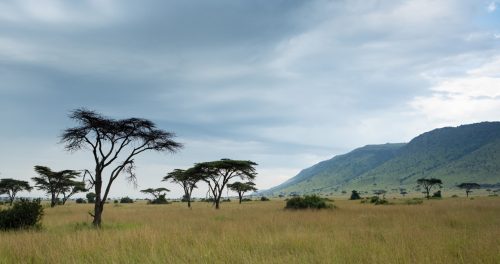
Angama Safari Camp